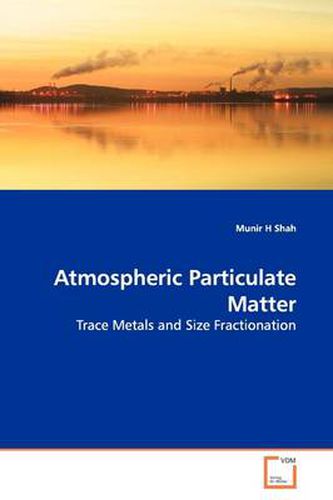Readings Newsletter
Become a Readings Member to make your shopping experience even easier.
Sign in or sign up for free!
You’re not far away from qualifying for FREE standard shipping within Australia
You’ve qualified for FREE standard shipping within Australia
The cart is loading…






This title is printed to order. This book may have been self-published. If so, we cannot guarantee the quality of the content. In the main most books will have gone through the editing process however some may not. We therefore suggest that you be aware of this before ordering this book. If in doubt check either the author or publisher’s details as we are unable to accept any returns unless they are faulty. Please contact us if you have any questions.
Particulate pollution has been considered as an emerging atmospheric problem particularly due to overwhelming anthropogenic activities. Numerous health effects are associated with these particulates mainly due to their smaller size and toxic chemical species. The focus of this work is to characterize atmospheric particulate matter in terms of its trace metal contents and size fractionation. Correlation and regression analyses are used to determine the dependence of trace metals and particulate fractions in relation to meteorological parameters. Seasonal, monthly and daily variations are assessed for metals and particulate fractions followed by diurnal/nocturnal disparities. The source identification is carried out by principal component and cluster analyses. Enrichment factors of trace metals are estimated to find out the extent of anthropogenic intrusion. The particulate metal data reported from different regions around the world are also compared. It is anticipated that the findings would be of interest for atmospheric scientists and regulatory/law enforcement agencies, in addition to general public.
$9.00 standard shipping within Australia
FREE standard shipping within Australia for orders over $100.00
Express & International shipping calculated at checkout
This title is printed to order. This book may have been self-published. If so, we cannot guarantee the quality of the content. In the main most books will have gone through the editing process however some may not. We therefore suggest that you be aware of this before ordering this book. If in doubt check either the author or publisher’s details as we are unable to accept any returns unless they are faulty. Please contact us if you have any questions.
Particulate pollution has been considered as an emerging atmospheric problem particularly due to overwhelming anthropogenic activities. Numerous health effects are associated with these particulates mainly due to their smaller size and toxic chemical species. The focus of this work is to characterize atmospheric particulate matter in terms of its trace metal contents and size fractionation. Correlation and regression analyses are used to determine the dependence of trace metals and particulate fractions in relation to meteorological parameters. Seasonal, monthly and daily variations are assessed for metals and particulate fractions followed by diurnal/nocturnal disparities. The source identification is carried out by principal component and cluster analyses. Enrichment factors of trace metals are estimated to find out the extent of anthropogenic intrusion. The particulate metal data reported from different regions around the world are also compared. It is anticipated that the findings would be of interest for atmospheric scientists and regulatory/law enforcement agencies, in addition to general public.